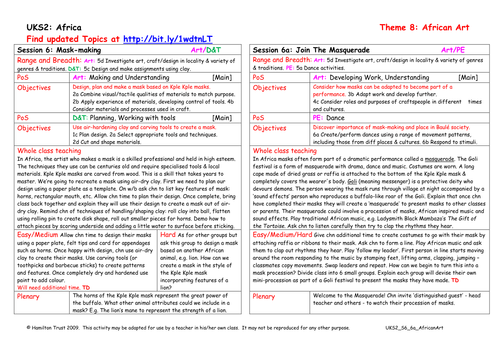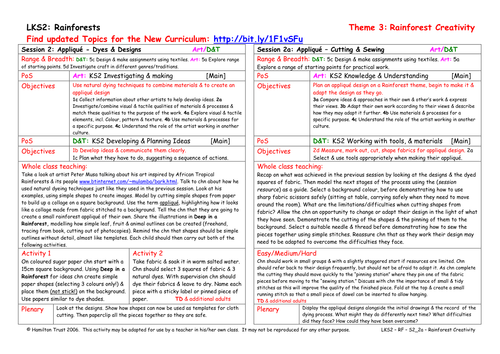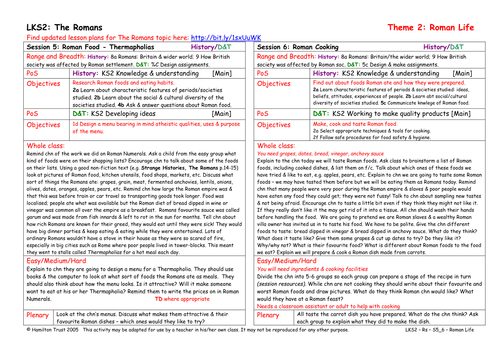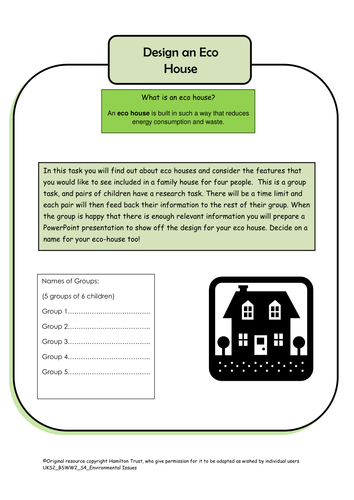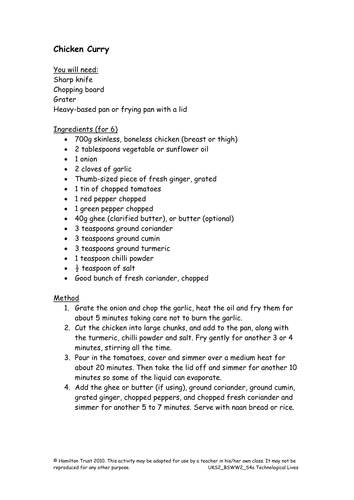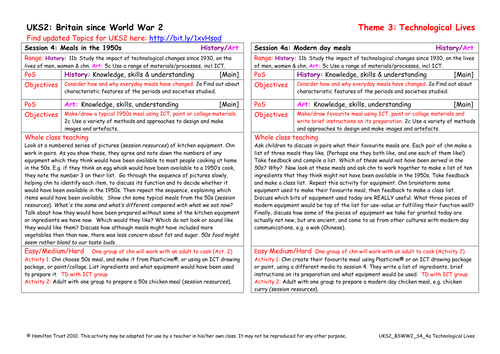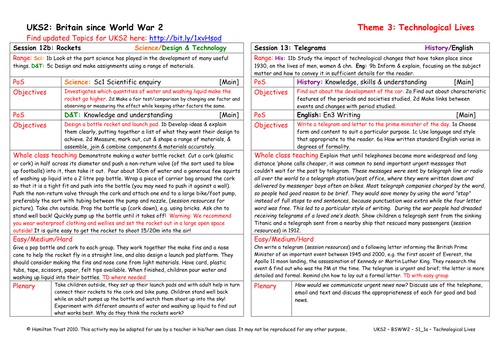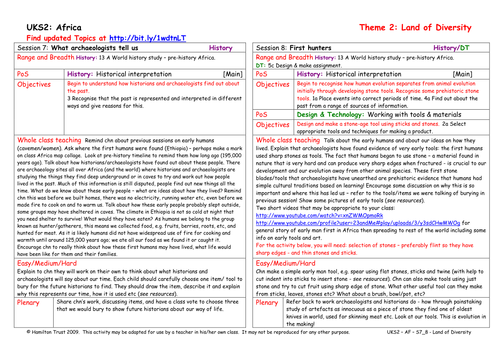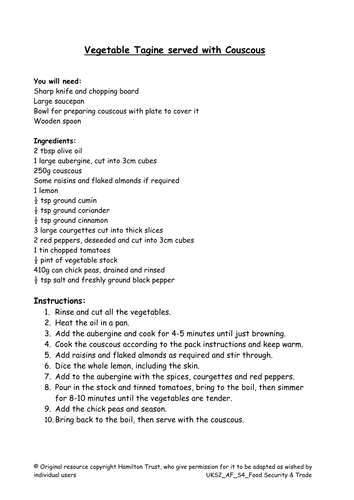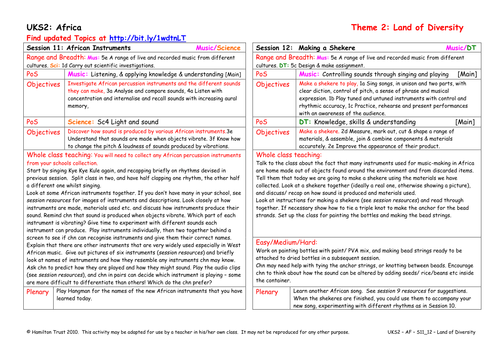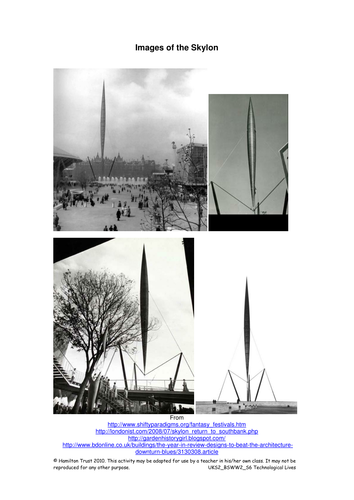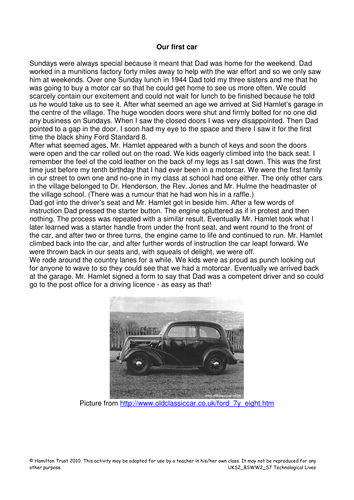
3k+Uploads
9988k+Views
11603k+Downloads
Design, engineering and technology

Batik Technique
Introduce children to the techniques of flour resist batik and explore the history of batik in Africa. Children get a chance to practise the methods themselves.

Family Food
Consider where the food that we eat comes from. Grown at home, locally or in another country? Discuss food miles. Who does the shopping, cooking, washing up? Where does the water come from? Cook a meal/dish and write the recipe to send to your link school. Suitable for years 5 and 6.

Household Gadgets
Children discuss labour-saving gadgets and chores which are still time-consuming or unpleasant. They then work in groups to design their own gadget and present it to the rest of the class as in the Dragon’s Den.

Mask Making
Make a Kple Kple mask using air-dry clay. Based on their research children design and make their own versions of these fascinating African masks.

Appliqué - Dyes & Designs
Amazing Amazonian Appliqué! Children use the work of an artist inspired by the rainforest and Deep in a Rainforest as a starting point for some art work of their own. They create simple designs and dye their fabric nature’s way in this session.

Making Aqueducts
Children create and complete their working model of an aqueduct using card painted with PVA glue or varnish and plastic pipe. After they are completed, children will try out their aqueducts to check that they really do carry the water. They are then evaluated.
Suitable for years 3 and 4.
Find other lesson plans and resources at www.hamilton-trust.org.uk.

Designing Aqueducts
Aqueducts are the subject of two session’s work. Children research aqueducts, understanding their purpose and also their construction.
They then begin to plan to make their own working model of an aqueduct, looking at the available materials.
Suitable for years 3 and 4.
Find other lesson plans and resources at www.hamilton-trust.org.uk.

Roman Food - Thermapholias
Children continue their researches into Roman everyday life, turning their attention to eating habits and food. They look at some of the foods and recipes of the Romans, and then design a Roman meal to be eaten in a Thermapholia.
Suitable for years 3 and 4.
Find other lesson plans and resources at www.hamilton-trust.org.uk.

Adinkra Block Printing
Selecting appropriate tools and techniques chn create potato stamps of their own Adinkra cloth symbols, ready to block print on a cloth.

Design An Eco House
Children consider the elements that they would like to see in an eco house. Children work in groups to research alternative energy sources, insulation, building materials etc. The groups prepare a presentation to show their designs to the rest of the class.
Hamilton’s cross-curricular topics provide extensive planning resources to facilitate teaching a range of subjects under specific historical, geographic or thematic umbrellas.

Grow Your Own
Children compare a food journal they have kept with a food pyramid which gives the recommended servings of different food groups. The need to include fruit and vegetables is highlighted and children design a garden to grow their own.

How Has Farming Changed?
After WW2 and rationing farmers had to increase production. Children discuss where food comes from, and their views on the use of heavy farm machinery and pesticides. Children make a model of a fruit/vegetable or create an ICT presentation showing seasonal availability.

Modern Day Meals
Children discuss their favourite meals, made a model/drawing of it as session 4. One group prepares a chicken curry. All taste this and vote for either the 1950s chicken meal or the modern day curry.

Meals In The 1950's
Children look at pieces of kitchen equipment and guess which were available in the 1950s. One group make a real chicken meal, whilst the others make a typical 50s dinner from Plasticine, an ICT package or paint/collage materials. All taste the 50s dinner.

Rockets
Demonstrate a water rocket to children, they then make their own, adding fins, nose cone and design a launch pad.

First Hunters
In this session children look at how prehistoric man created his/her tools. As hunter-gatherers they had need of sharp knives and axes and spears. Children have fun making their own prehistoric tools using sticks, twine and stones.
Suitable for years 5 and 6.
Find other lesson plans and resources at www.hamilton-trust.org.uk.

Terrific Tagine
Children return to the notion of a staple food. They look at uncooked couscous grain and discuss how this grain is a staple of much of North Africa and Middle East. Then children cook vegetable Tagine and enjoy eating it!

Making a Shekere
Children discover that in Africa musical instruments are often hand made from objects found in the environment. Look at an African shekere in detail. Children make a shekere of their own based on a plastic washing up liquid container, then make music!
Suitable for years 5 and 6.
Find other lesson plans and resources at www.hamilton-trust.org.uk.

Festival Of Britain Architecture
Children look at Festival of Britain architecture especially the Skylon and Dome of Discovery. They choose to make a Skylon, Dome or to design their own futuristic piece of architecture.

History of Cars
Children listen to a memoir of an elderly person's first car and then look at modern day car brochures looking for features which are new, and write a list of features they would like to see in future cars.




